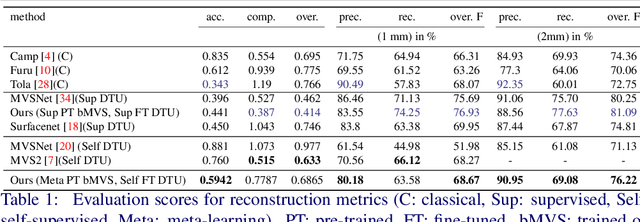Arijit Mallick
CANDID: Correspondence AligNment for Deep-burst Image Denoising
Jun 16, 2023Abstract:With the advent of mobile phone photography and point-and-shoot cameras, deep-burst imaging is widely used for a number of photographic effects such as depth of field, super-resolution, motion deblurring, and image denoising. In this work, we propose to solve the problem of deep-burst image denoising by including an optical flow-based correspondence estimation module which aligns all the input burst images with respect to a reference frame. In order to deal with varying noise levels the individual burst images are pre-filtered with different settings. Exploiting the established correspondences one network block predicts a pixel-wise spatially-varying filter kernel to smooth each image in the original and prefiltered bursts before fusing all images to generate the final denoised output. The resulting pipeline achieves state-of-the-art results by combining all available information provided by the burst.
Learning to Adapt Multi-View Stereo by Self-Supervision
Sep 28, 2020



Abstract:3D scene reconstruction from multiple views is an important classical problem in computer vision. Deep learning based approaches have recently demonstrated impressive reconstruction results. When training such models, self-supervised methods are favourable since they do not rely on ground truth data which would be needed for supervised training and is often difficult to obtain. Moreover, learned multi-view stereo reconstruction is prone to environment changes and should robustly generalise to different domains. We propose an adaptive learning approach for multi-view stereo which trains a deep neural network for improved adaptability to new target domains. We use model-agnostic meta-learning (MAML) to train base parameters which, in turn, are adapted for multi-view stereo on new domains through self-supervised training. Our evaluations demonstrate that the proposed adaptation method is effective in learning self-supervised multi-view stereo reconstruction in new domains.
 Add to Chrome
Add to Chrome Add to Firefox
Add to Firefox Add to Edge
Add to Edge